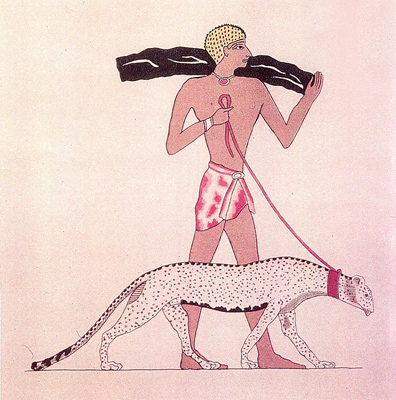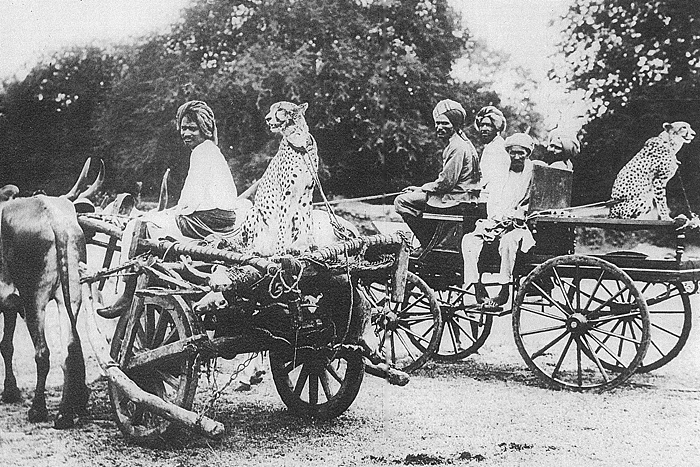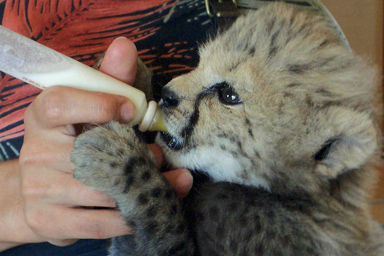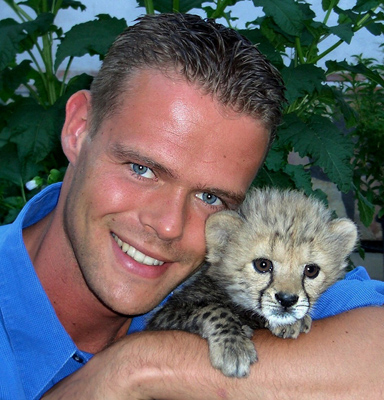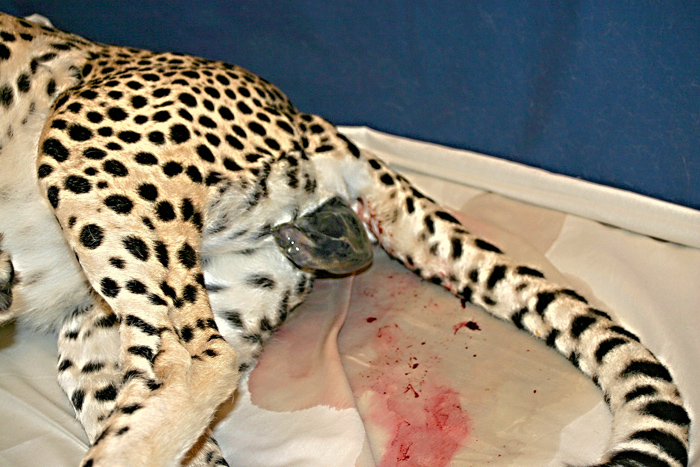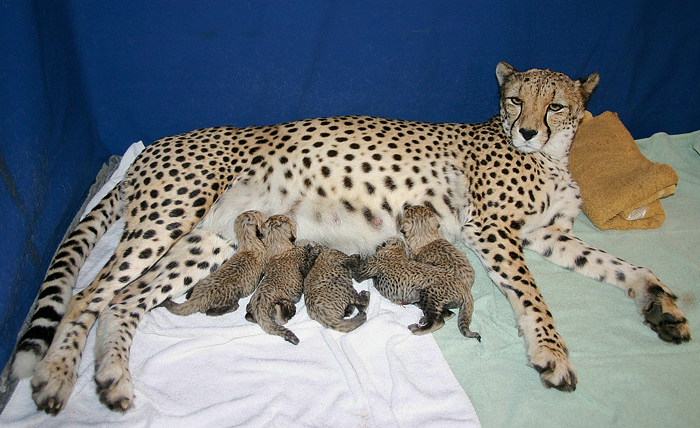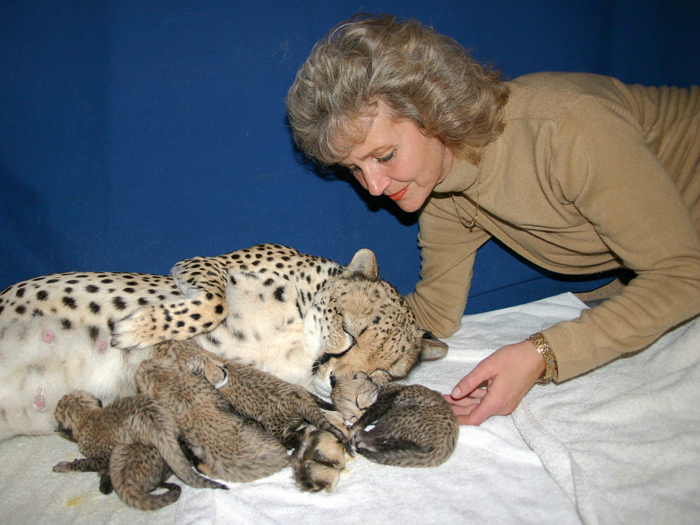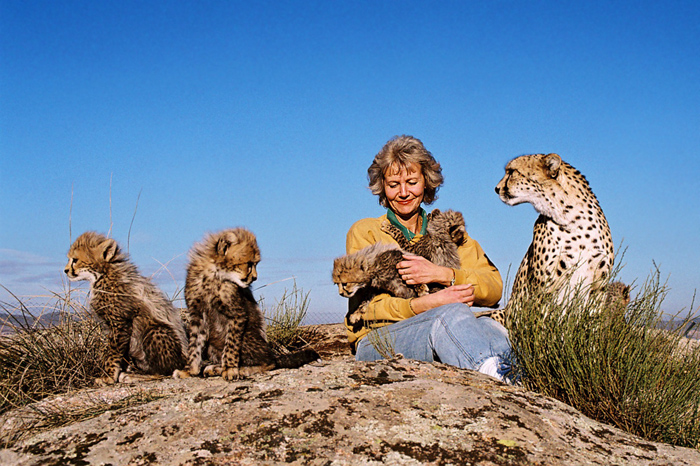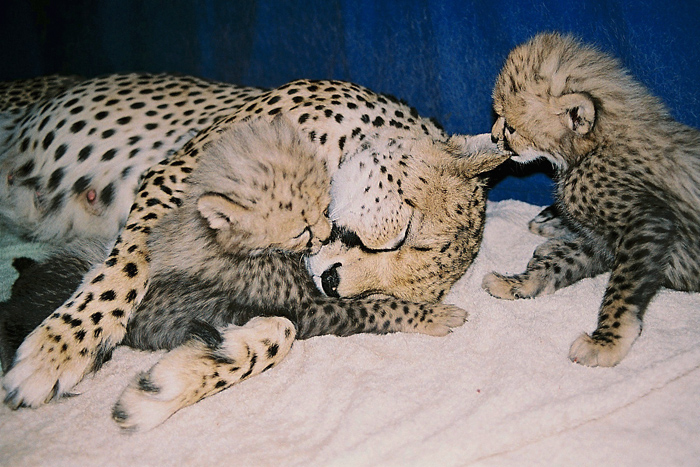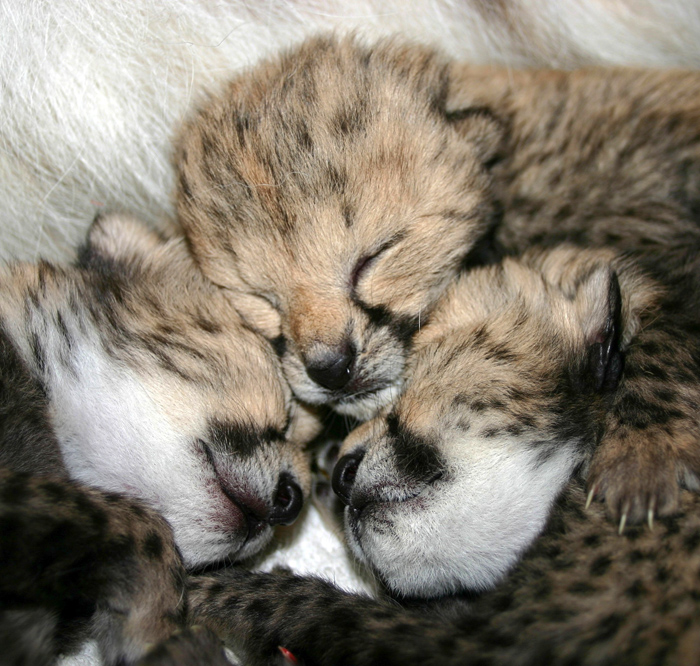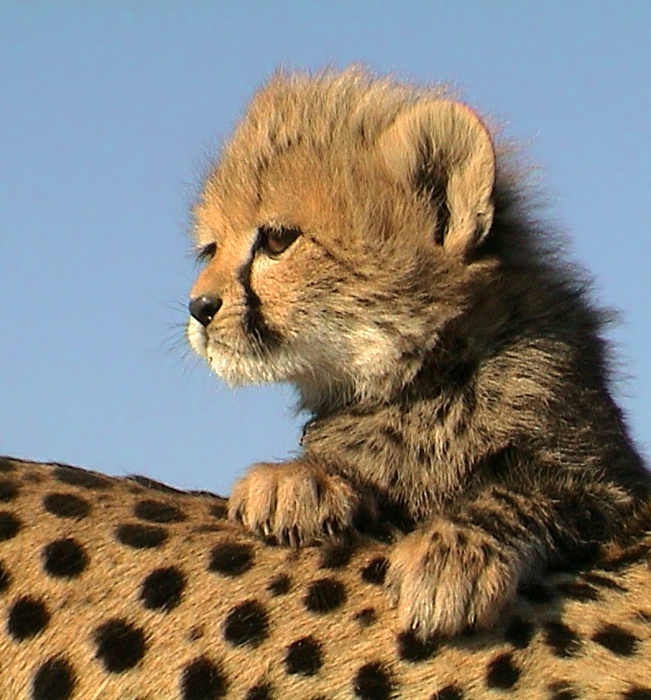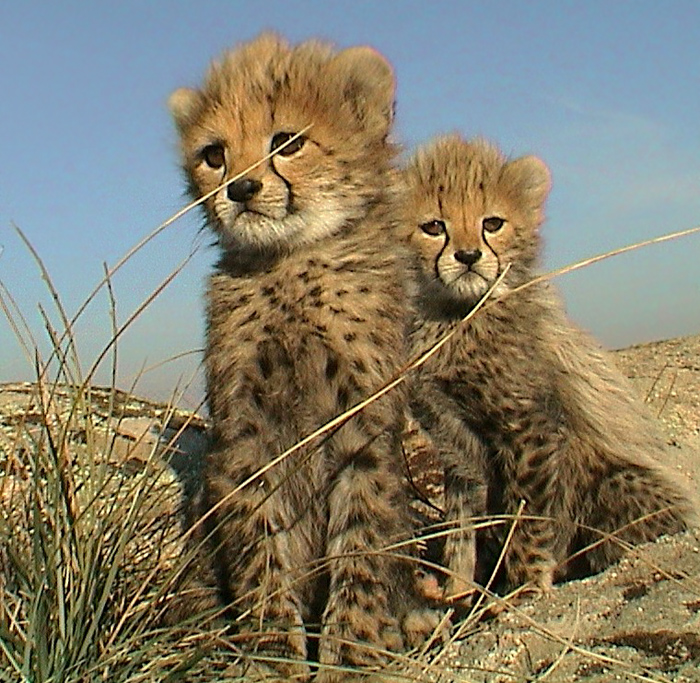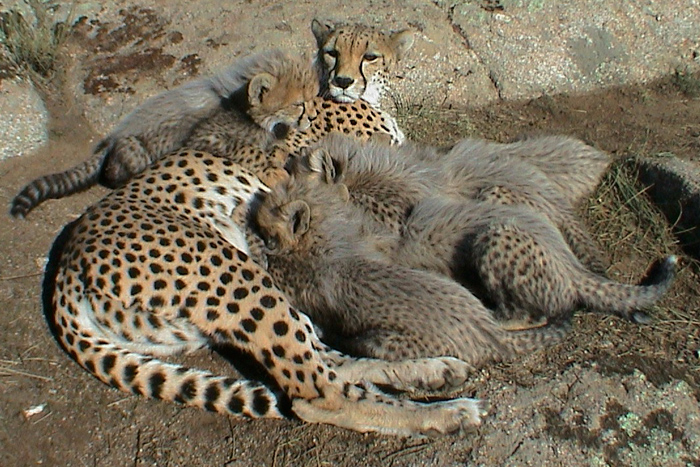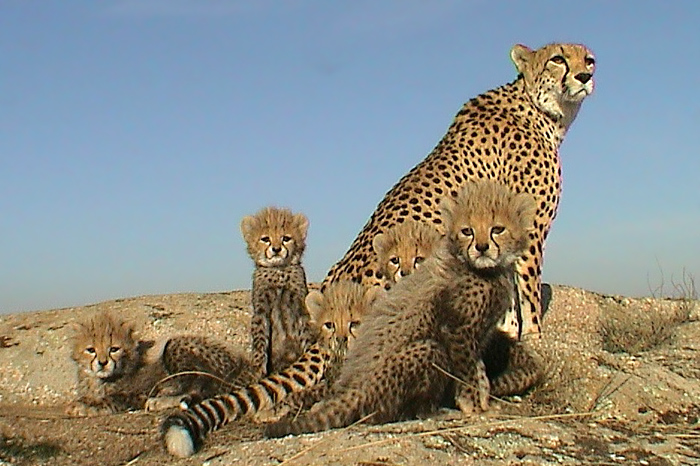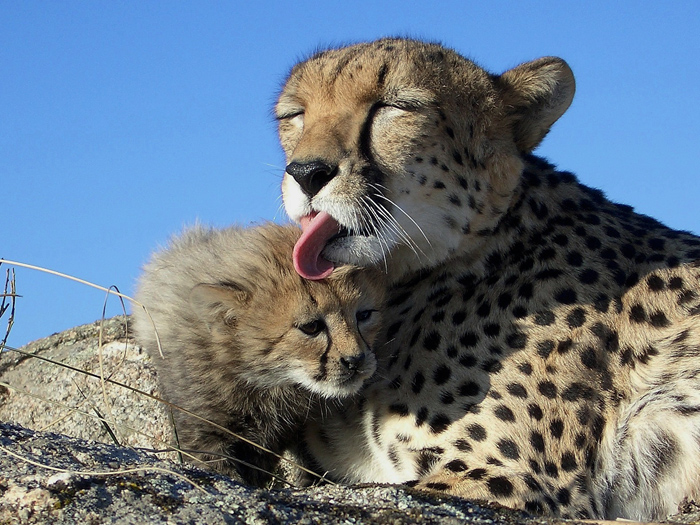|
History
The last hunting party in India with cheetahs took place in 1942
Current problems For decades zoos or private institutions all over the world have tried to breed this wonderful species of big cats, which is also the fastest mammal on earth. These efforts have become necessary in face of a decrease of the natural population of wild cheetahs from estimated 100.000 creatures in 1900 to about 12.000 today. Today estimated 700 cheetahs live in zoos or are privately owned, although only with very limited breeding success. So they say that in entire Europe less than a dozen cubs were born in 2003. Only a few institutions have been able to breed cheetahs on a regular basis. When trying to find explanations they hold the cheetahs responsible for these difficulties: bad quality of the sperm, unsatisfactory or non - existent heat of the female or even genetical problems are discussed. Almost nobody blames the human being who imposes the cheetahs on keeping conditions which are avoiding successful breeding efforts, or even prevent those from the start. For example, groups of both sexes, as frequently displayed in zoos, stand in direct contrast to the natural behavior of cheetahs. Female cheetahs in the wild are living solitarily and only tolerating a male during their brief period of maximum heat. Also big cats enclosures close to them will prevent a femal cheetah to come along with a normal sexual cycle. Even timid, and frightened animals with no trust in their keeper, which have to be sedated for even minor manipulations and transports, will not produce offspring in such an unsafe environment. The main problem with breeding cheetahs lies in the determination to fix the exact time of heat and its subsequent toleration of the male. Due to difficulties in discovering the outer symptoms of the heat, mostly the suitible time is not identified. Alternatively, “chance socializations” with males are attempted, but are bound to fail. Alternatives Until today many experts consider the breeding with tame and hand reared cheetahs as impossible, despite the following benefits are obvious: Especially for the evaluation of the heat, a tame female is of invaluable advantage. The specific behavioral symptoms can be put into relation to the changes (size, color, secretion) of the vulva via simple adspection and palpation. Thus an individual calendar of cycle can be set up easily for each cat. The absolute well-being of the female cheetah, meaning a boundless trust in the keeper and the environment as well as an excellent diet, metabolism and climate, are leading to very regular cycles. Even long distance car transportations will not cause any delay. This knowledge enables us to fix the exact date for mating. First successes
Such “mistakes” of a primigravida mother cannot be explained by the tameness, because it some-times also occurs in the same way in the nature. A few weeks later “Bagheera” was in heat again. We took advantage of the subsequent heat for another mating with the same male on August 22nd. On November 24th in 2004, not even five months after the first litter, “Bagheera” gave birth for the second time, to five, this time strong and healthy cubs, which were all fed and raised by herself. Because of cool weather conditions the cubs were kept for the first weeks with their mother inside the house.
Bagheera giving birth to the first cub.
After seven hours all five cubs were born and suckled already half hour later.
|
